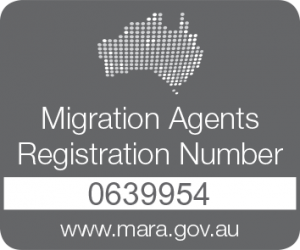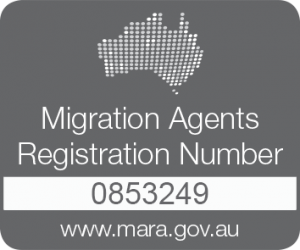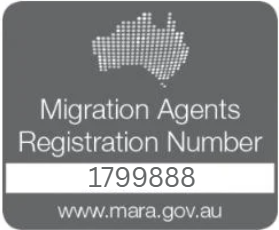Applying for an Australian Parent Visa
Applying for an Australian Parent Visa
It goes without saying that the last 2 years have been an extremely difficult and trying time for families separated by the Australian Border closures due to the COVID-19 pandemic.
Being an office of migrants ourselves, we firsthand and emphatically understand the emotional drain and stress the Australian border closures had on expats residing in Australia and how this beautiful island we call home, literally felt a million miles away.
Finally, in November 2021, the Australian Government deemed parents/parents in law as “immediate family members”, and Australia experienced our very own scenes reminiscent of “Love Actually” with heart-warming, emotional, tear-jerking airport reunions.
February 2022 our borders opened to all vaccinated visitors, Hooray!
Understandably, we have noticed a high increase of enquiries from migrant parents and thought this would be a good opportunity to provide some useful information on the various visa options available to parents.
There are predominantly three Permanent Parent visas that could be applied for:
- Onshore Aged Parent (Subclass 804) visa;
- Onshore Contributory Aged Parent (Subclass 864) visa; or
- Offshore Contributory Parent (Subclass 143) visa.
There is also an offshore Non-Contributory parent visa option, but as it is a 30-year processing time, there’s next to no point applying for it as you will be required to wait overseas during this processing time – which makes this visa pretty much redundant.
Each permanent visa application above requires the “Balance of Family Test” to be met. Essentially, this means the main applicant must have minimum 50% of their children residing in Australia as a settled permanent resident or citizen.
The permanent parent visas are divided between two categories, Contributory and Non-Contributory.
The “Non-Contributory” Aged (Subclass 804) visa has a much lower visa application charge, but a much longer application processing time (currently also approx. 30 – 35 years)
The Contributory (Subclass 143 or 864) visa has a shorter processing time, but a much higher visa application charge, Surprise! They’ll charge you more to process your application sooner, and this visa is taking approximately 5 years to process.
The number of decisions made on parent visa applications per year is capped. This means only a certain number within any financial year (1 July to 30th June in Australia) are decided. However, a large volume of applications are received each financial year, way, way more than the allocated cap, and this is why Parent visas take so long to be processed.
The “Non-Contributory” Aged (Subclass 804) parent visa currently has approximately a 30-year processing time estimate. This is due to many, many parents wanting to join their children in the land of Oz and the caps per financial year being so low.
Fortunately, for some, this visa can be applied for onshore in Australia, providing a bridging visa to applicants which permits them to remain in Australia over the 30-year processing period. However, to apply onshore for the non-contributory aged parent visa (subclass 804), the main applicant must be deemed as “aged”, which means they must be of retirement age in Australia. This is the one time in life when being “aged” actually works in your favour.
Unfortunately, due to the 30 year plus processing times of this visa, it is unlikely you will be around to see the processing times out to be granted the permanent visa but the bridging visa allows you to remain in Australia whilst waiting, so all is not lost. We have many, many clients currently residing in Australia, happily and securely, on the bridging visa attached to a lodged subclass 804 visa.
The Onshore Aged Parent (Subclass 864) visa works similarly to the above visa, however, a high second visa application charge (currently $43,600 per applicant) is charged, bringing the processing times down to approx. 5 years. This visa will lead to permanent residency, which in turn can lead to citizenship.
The Australian Governments reasoning (as Governments always have a reason) for charging this high second visa application charge amount. Many parents, when they decide to migrate to Australia, are generally retired.
This means, they will have access to a pension, Medicare (equivalent to NHS), the works. These funds are of course provided by Australian taxpayers and this second visa application charge is an attempt to offset the funds paid by the taxpayer throughout the parents’ life here. Whilst you may think that $43,600 per applicant is a high fee to pay to migrate to Australia, the Government this year announced that parents migrating to Australia cost the Australian taxpayer $350,000 per parent. We of course know that parents/grandparents bring so much value with them to Australia, such as free child minding for pre-school children, but the Government just sees the $ figure it costs the tax payer and justifies this with the second VAC!
The Government have also introduced a two-stage visa process for contributory parents to help them spread the hefty costs – this is the subclass 173/143 (offshore) or subclass 884/864 (onshore for aged parents) – which is a temporary/permanent visa stream.
The temporary visa is applied for first and this is approved for a period of 2 years. Prior to the temporary visa expiring, you then apply for the permanent stage. The fees are split between the two applications and generally cost about $4,000 more per applicant when lodging the two-stage temporary/permanent visas rather than applying immediately for the permanent visa. It means higher fees but more time in which to pay them, which is essential to some parents if they have property to seel for example.
There are many other variables when applying for these visas, including meeting health, character, your eligible children demonstrating they are settled in Australia, financial bonds and the like.
Financial bonds are only required for the contributory parent visas and this is normally provided by the sponsoring child, although anyone can provide an Assurance of Support. This bond is kept for a ten-year period, and costs $10,000 for one applicant and $14,000 for two applicants (i.e mum and dad migrating together). Assurance of supports are not looked after by the Department of Home Affairs but are processed through The Department of Social Services.
Temporary Parent Visa Option – Subclass 870
In 2018 the Australian Government introduced a temporary parent visa option for those parents of Australian residents/citizens who do NOT meet the Balance of Family Test.
This visa can be applied for, for either a three-year period or a five-year period.
Your Australian Citizen/permanent resident child is still required to sponsor you and will need to be approved as a sponsor prior to your application. There is a minimum salary requirement for the sponsor to be met and minimum residence requirements.
At the expiry of this visa, you may apply for further visas to visit Australia again, however, this visa will only be granted for a cumulative maximum period of 10 years. It is also worth noting, the 870 visa does not have work rights.
Reuniting families is important to First Class Migration Australia. If you are interested in discussing the various parent visa options with an experienced, registered migration agent, then please do not hesitate to contact us at .





